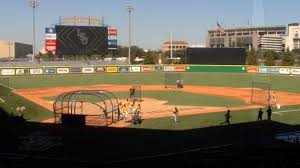Different Forms of Scrimmages
Scrimmages are a cornerstone of baseball coaching and provide players with game-like experiences to help coaches evaluate their team. Scrimmages have evolved from a traditional baseball game. There are multiple ways to practice common and uncommon events that may happen in the game of baseball. In this post I will go over different kinds of scrimmages to help your team get game-like practice in.
Coach Pitch/Machine Scrimmage
The first form of batting practice that I will cover is coach pitch/pitching machine scrimmage. The only difference between this kind of scrimmage and the others that will be discussed is the fact that the pitcher is not the one throwing the pitches. A coach or a pitching machine is throwing the pitches. In this form of batting practice, there are two teams on the field. The catcher is catching the pitches and the pitcher is behind the L-screen getting ready to play defense. If a ball hits the screen on the ground, the pitcher will work on fielding his position. In this situation you can have a coach on standby to hit a ground ball to the pitcher or the pitcher can keep a ball with him and work on the fielding mechanics to field his position. The coach or the pitching machine will throw game like pitches to the hitters so that they are seeing game speed and spin. Lastly, the coaching staff can determine the situation that will be played out per inning. For example: inning one could start with no one on, and inning two can have runners on first and second.
Task Scrimmage
With this kind of scrimmage, there will be two teams in separate dugouts. When they get into their dugout there will be a manilla envelope waiting to be opened. In the envelope there will be a piece of paper with a set of tasks that the team needs to accomplish. If the team does this, then they will get extra runs on the board. This will be tallied up by coaches on the staff during the scrimmage and will be talked about in the post game huddle. The tasks will be broken up by position area. An example of what the paper would say are: Pitchers must not give up 3 walks as a staff, Hitters must get 3 sacrifice bunts down, Infielders must turn 5 double plays, Outfielders must get 2 assists, etc. This is a fun way for both teams to compete and work on skills that may not come up in a scrimmage. To make this easier to happen, have base runners start on different bases with different amounts of outs per inning.
Big Inning Scrimmage
In this kind of scrimmage the base runners will be at second base. The count will be 1-1 and the coaches can determine the amount of outs for the inning. The goal for the offense in this scrimmage is to create a big inning and put up several runs. This helps an offense create and a defense prevent the big inning from happening.
2-Strike Scrimmage
For this scrimmage the offenses will have two strikes when they step into the batter's box. Base runners can be placed at random bases. This will help pitchers work on their two strike pitches and hitters to work on their two strike approach. All good offenses need to be able to compete and have success with two strikes, at the same time good pitching staffs need to take care of business with two strikes. This is a great competition that provides quality experiences for the team.
Over and In
In this kind of scrimmage, the batter will try to sacrifice bunt their teammate over. If the batter gets his teammate advanced up a base, then he can get an at bat to knock his teammate in. If he does not get his teammate in, then he will be counted as an out. This allows for hitters to work on sacrifice bunting and the defense to work on bunt plays.
Pre-Inning Bunt and Post Inning Event
This is more so an event that happens in a traditional scrimmage rather than a kind of scrimmage. Before the inning begins there will be a base runner on the bases. The leadoff hitter will work on sacrifice bunting his teammate over. If the defense gets an out the defense gets a point, and if the hitter gets on base he will give his team a point. After the pre-inning bunt the bases will be cleared and a typical inning will happen. After three outs have been recorded there will be a post inning event. In this event the batter will try to get a hit or score his teammate. If the defense gets an out in the post inning event they will get a point, and if the offense gets a hit or gets the run in they will get a point.
There are countless ways to practice playing the game of baseball, but the most important aspect of a scrimmage is to give your team experiences to prepare them for the game. These options will provide your team with worthwhile experiences in order to be ready to compete at their best. All of these kinds of scrimmages can be done with a coach pitching, a machine pitching, or pitchers pitching. Lastly, the best advice I can give is to be creative, compete, and learn!
Comments
Post a Comment